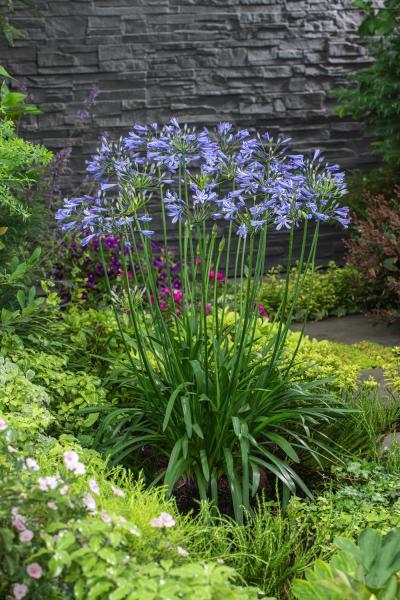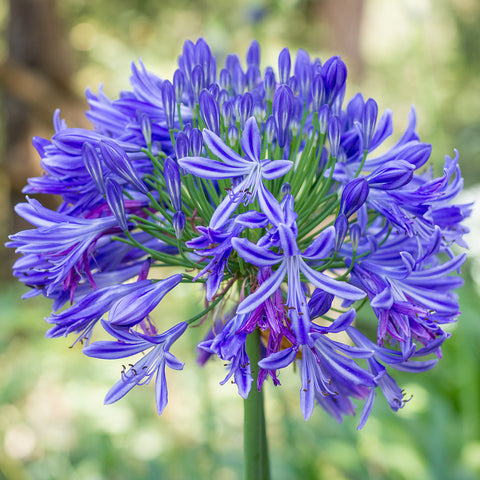Agapanthus Expanding Problems: Dirt, Sunshine, and Watering
Agapanthus Expanding Problems: Dirt, Sunshine, and Watering
Blog Article
Understanding the Art of Agapanthus Treatment: Necessary Actions for Healthy And Balanced Growth and Vibrant Flowers
In the realm of gardening, the growing of agapanthus stands as a rewarding undertaking for those who look for to nurture these elegant flowering plants. With their striking flowers and stylish foliage, agapanthus has caught the interest of garden enthusiasts worldwide. Nonetheless, accomplishing optimum development and vivid blooms requires a nuanced approach that incorporates various necessary actions. From selecting the ideal variety to mastering trimming strategies, the trip in the direction of growing flourishing agapanthus plants is diverse and holds the key to opening the complete capacity of these botanical gems.

Choosing the Right Agapanthus Selection

When choosing the appropriate Agapanthus variety for your garden, take into consideration elements such as environment suitability, blossom shade, and growth routine. Furthermore, consider the climate in your region to make sure the Agapanthus selection you choose can flourish in your particular conditions. Comprehending the development habit of various Agapanthus selections is critical for appropriate placement within your garden.
Suitable Planting Problems
Considering the ideal environmental needs is crucial for effective Agapanthus cultivation. Agapanthus plants are sensitive to chilly temperature levels and should be safeguarded from frost throughout wintertime months.
To make certain healthy development and vivid flowers, plant Agapanthus bulbs at a depth of regarding 2-4 inches and space them 8-12 inches apart. Mulching around the base of the plants assists keep dampness and reduces weed growth.
Watering and Fertilizing Tips
Preserving appropriate moisture levels and giving crucial nutrients are crucial elements in the treatment program for Agapanthus plants. It is important to strike an equilibrium when it comes to sprinkling Agapanthus. If overwatered, these plants favor continually damp dirt but are prone to root rot. During the expanding period, water deeply once a week, making sure the soil is well-draining to stop waterlogging. In hotter climates or throughout durations of drought, more frequent watering may be required to keep the dirt equally wet. Nonetheless, lower watering in the winter months to stop waterlogged conditions.
Feeding Agapanthus is important for advertising healthy and balanced development and respected blossoms. Use a balanced plant food, such as a 10-10-10 formula, in the early spring as brand-new development emerges. By complying with these watering and feeding suggestions, you can guarantee your Agapanthus plants grow and produce vibrant, long-lasting blossoms.
Trimming Strategies for Agapanthus
Trimming Agapanthus plants at the appropriate times and with correct techniques is important for keeping their wellness and promoting optimal development and flowering. The suitable time to prune Agapanthus is in late winter season or very early spring prior to brand-new growth emerges.
Deadheading invested blossoms can additionally reroute the plant's site here power into generating even more blooms instead than setting seeds. If you desire to collect seeds for breeding, leave some blossoms to fully grown and dry on the plant.
Keep in mind to use tidy, sharp tools to make accurate cuts and minimize the risk of introducing illness. Agapanthus. Normal trimming will help keep your Agapanthus looking neat and healthy while making certain a bountiful screen of stunning blossoms
Dealing With Common Insects and Conditions
After guaranteeing correct pruning techniques for Agapanthus, it is vital to attend to common insects and conditions that can impact the wellness and vitality of these plants. Agapanthus plants are typically durable but can still succumb specific issues. One typical pest that influences Agapanthus is the Agapanthus gall midge. This small, orange fly lays its eggs in the foliage, leading to altered growth and blossom buds that stop working to open up. To combat this pest, trim and ruin any kind of afflicted plant components and take into consideration making use of insecticidal soap.
In addition, Agapanthus plants can experience from origin rot if they are planted in improperly draining pipes soil. By being alert and taking punctual action against insects and illness, you can assist your Agapanthus plants thrive and generate vivid blossoms. Agapanthus.

Verdict
Finally, understanding the art of agapanthus care involves choosing the best selection, supplying excellent planting conditions, proper watering and feeding, proper trimming techniques, and dealing with common pests and conditions. By complying with these necessary steps, you can ensure healthy and balanced growth and dynamic i thought about this blossoms for your agapanthus plants. Bear in mind to routinely keep track of and maintain your plants to advertise their overall health and durability.
To make sure healthy growth and lively flowers, plant Agapanthus light bulbs at a depth of about 2-4 inches and room them 8-12 inches apart. By following these watering and fertilizing ideas, you can guarantee your Agapanthus plants thrive and produce vibrant, resilient blooms.
One usual bug that affects Agapanthus is hop over to these guys the Agapanthus gall midge. In addition, Agapanthus plants can endure from root rot if they are planted in inadequately draining pipes soil. By complying with these necessary actions, you can guarantee healthy and balanced growth and lively flowers for your agapanthus plants.
Report this page